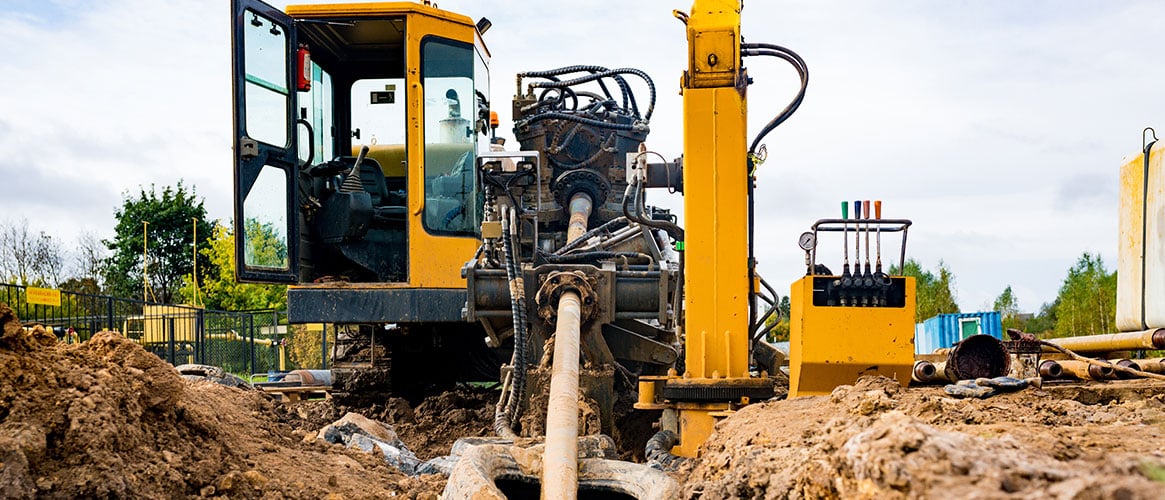During a horizontal directional drilling (HDD) operation, one of the most dangerous work areas is the ‘exit pit’ where the drill head (reamer) emerges from the ground. No one should be anywhere near this equipment at any time it’s operational. That’s because when it’s in operation, the reamer moves at a fast and forceful pace. In fact, the part that sticks out of the ground can move back and forth, up and down, and even sway beyond the boundaries of the exit pit.
What your employees need to know about horizontal directional drilling operations
Anyone near the equipment is in danger of being struck by, pulled into, and/or wrapped around the spinning reamer. The only time to approach the reamer is when the machinery is shut down and locked out after the initial underground path is drilled. The most serious HDD injuries occur after utility cables or pipelines are connected to the reamer to be pulled back through that underground path.
No one would want to be on top of the reamer when it’s turned off only to have the machinery fire back up to begin the pullback process. But, it does happen.
What your employees need to do during a horizontal directional drilling operation
Workers should stay on the ground while connecting the utility lines to the reamer. Everyone must leave the exit pit and ensure they are a safe distance away before giving the command to start.
Other steps to take to avoid injury include:
- The safe distance referenced above will vary by worksite and the type of material being pulled through. Your employees should be far enough away so that they will not be struck by any moving equipment—such as the drill rod and the connecting product—once the pullback process begins.
- Tie back long hair and don’t wear loose clothing or jewelry around the HDD drill. This helps reduce the risk of an employee being pulled into the machine should they be too close when it's in operation or if the machine starts up unexpectedly.
- High visibility vests or clothing should be worn to provide good visual confirmation that workers are at a safe distance.
Communication is critical during an HDD operation. When the time comes to begin the pullback process, the operator of the drill—who is stationed where the drill first entered the ground—should be in contact with the person at the other end (the tracker) who hooks the utility lines to the reamer. Using a radio, hand signals, and if possible standing where he/she can see the tracker, specific language must be used to confirm no one is in danger.
An example of communication—if the safe distance is 10 feet—could be:
Operator: “Are you at least 10 feet from the drill?”
Tracker: “Yes I’m at least 10 feet from the drill.”
Operator: “Is everyone else at least 10 feet from the drill?”
Tracker: “Yes, everyone else is at least 10 feet from the drill!”
What to cover at your safety meeting on horizontal directional drilling
Demonstrate and discuss how the drill rod moves, how that movement can pull a worker in, and how that can lead to injury.
- Establish the safe distance from the drill before work starts and announce it at the meeting.
- Establish and practice the language between the operator and tracker that must be repeated before the pullback process begins.
- Make sure workers have the right personal protective equipment, such as: high visibility vests, hard hats, safety glasses, and dielectric rubber gloves and boots. Make sure radios are in proper working order.
- Review your emergency response plan.
HDD-related injuries can be catastrophic and even fatal—but also avoidable. Stress the importance of getting out of the exit pit and moving a safe distance away from the machinery before it’s fired up. They can then safely watch the powerful machinery do its job.

